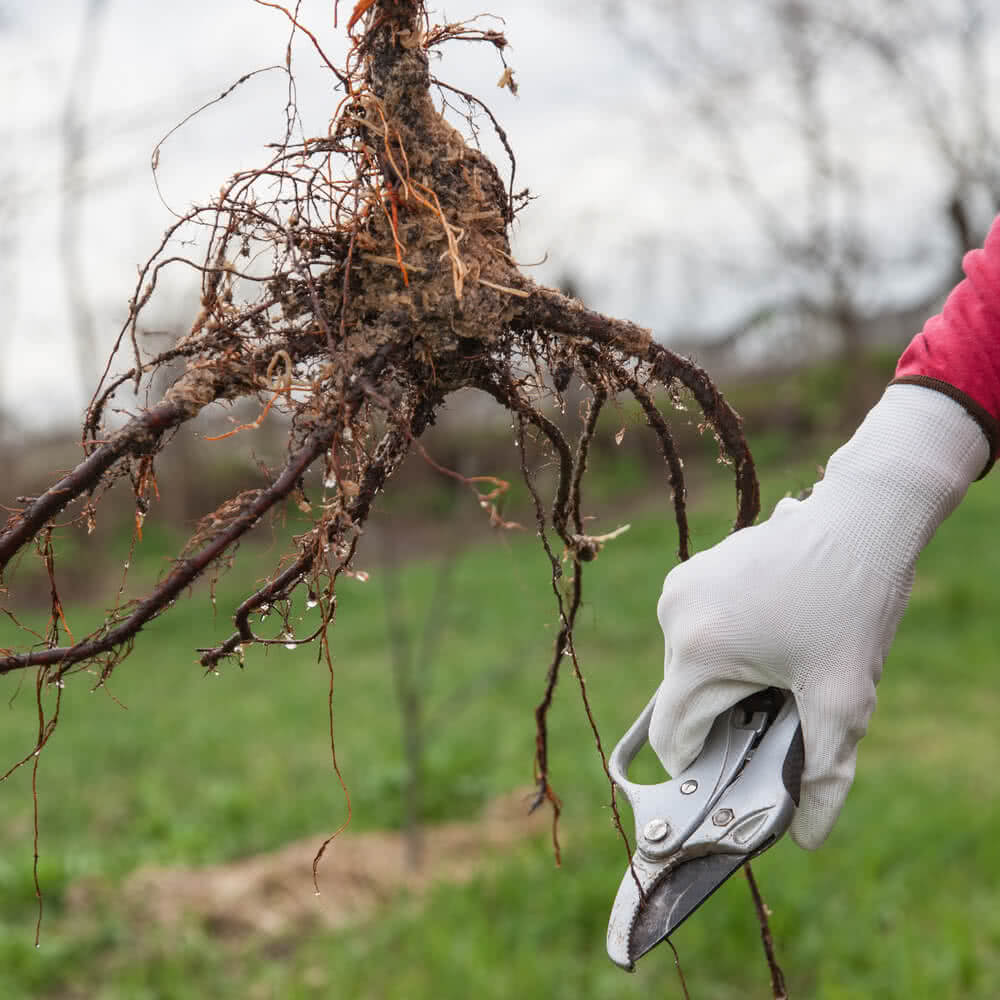Monsoon season marks the renewal of dynamic growth in perennial garden plants. As the plants begin to awaken from their dormant period, it is a good time to repot old established plants. When plant roots run around the inside of the pot, the plant gets pot bound; then it is time to pot on the plant into a larger container. Repotting operations are the same for young or older plants.
• Treatment of Pots Before Repotting
A clean pot is essential for repotting. Pots greened from previous use should be soaked in a bucket of potassium permanganate (10 grams in 1 litre of water) overnight, then scrubbed. If new clay or earthen pots are used, they should be soaked for 24 hours beforehand. There is no need to give any such treatment to plastic, ceramic or metallic pots.

• Pot Size for Repotting
There is nothing to be gained by giving a plant a pot larger than it needs, for this leads to waterlogging and damping off. The pot just a fraction larger than the previous one will usually provide ample space.

• Removing the Plant from the Old Pot
The plant itself should be in soil on the dry side so that it can be easily dislodged from its present pot. To turn out the pot, one hand should be spread over the top of the soil holding the stem between the fingers and then invert it.
If necessary, a root ball can be given a push with a pencil through the drainage hole so that it will slip out. The drainage material must be removed and, with gentle pinching and rubbing motions the soil ball should be reduced until it is small enough to go into a clean pot.

• Repotting the Plant in a New Pot
1. Drainage Layers
There should be 1 inch of clearance between the cleaned ball of earth and the side of the new pot. Adequate drainage is achieved by covering the hole on the bottom of the pot with a piece of broken flower pot, concave side downwards, and covering this in turn with a layer of flower pot chips or gravel. A layer of moss on top of this will prevent fine soil sifting through and clogging drainage.

2. Pruning Damaged Roots
Any damaged roots should be cut off with the sharpest knife available. Roots may be cut back in moderation to induce fresh growth, and if the plant is in an awkward shape, prune it lightly.

Also Read: Understanding Pruning
3. Adding Potting Soil
A little moist potting soil should be put into the pot and passed down lightly. This fresh compost rich soil should be added firmly around the sides. The soil mark on the stem indicates the level of planting, and as the soil settles, the plant will sink to slightly lower level.

4. Settling the Soil in the Pot
A potting stick is helpful for working the soil down the sides of the pot. The topsoil should be evened up, and the plant is watered thoroughly.
Buy pot-o-mix

5. Plant Propagation During Repotting
Many garden plants produce offsets, suckers, rhizomes, and bulbs. While repotting, such plants can be propagated by simple division method. The plant should be knocked out of the pot, with this, the roots are freed of its surplus soil, gently pulled apart. Plantlets are singled out each with separate stem/leaf/crown, and removed with a sharp knife, with roots attached. Each division is potted as a separate plant in a suitably sized pot using a good soil mixture.
Tulsi, Roses, Aloe-vera, Hibiscus, crotons, etc. should be repotted every year at the beginning of monsoon season.

Happy gardening!











